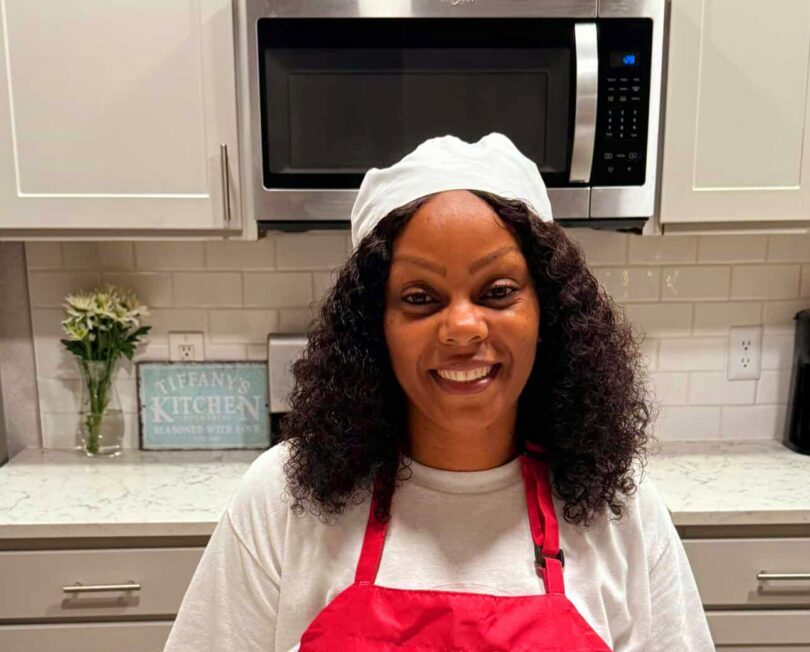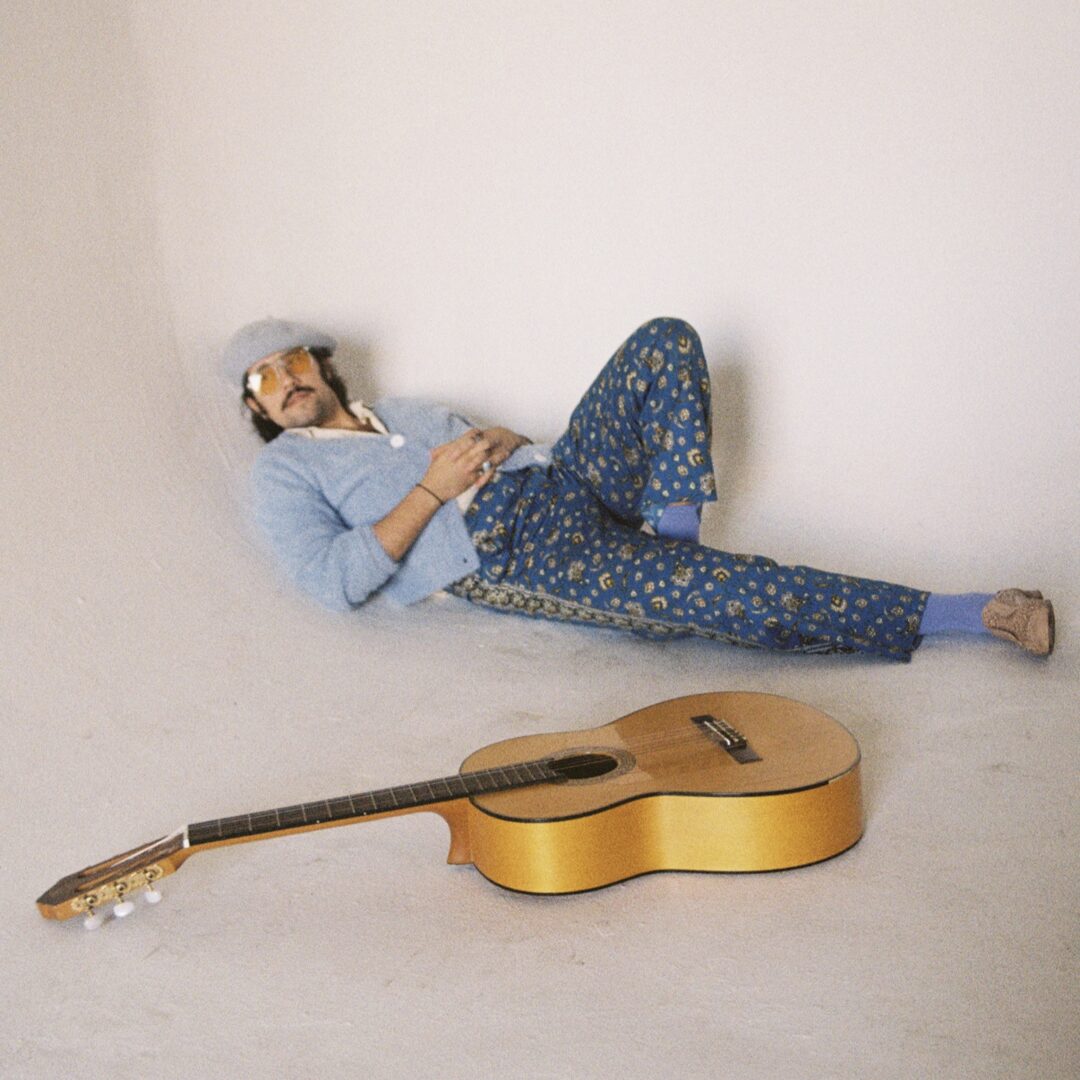We recently connected with Jurne Smith and have shared our conversation below.
Jurne, we’re thrilled to have you on our platform and we think there is so much folks can learn from you and your story. Something that matters deeply to us is living a life and leading a career filled with purpose and so let’s start by chatting about how you found your purpose.
Ever since I was young, I followed pursuits that made me happy and excited to live the next day. At such a young age, I never really knew exactly what it meant to have a purpose. For the time being I was doing what made me feel fulfilled. I remember like it was yesterday sitting in my living room watching TV, as my mother did my hair, and a Michael Jackson music video popped up on the screen. Just watching him dance made me feel excited, and in a moment of inspiration I thought, “That’s what I want to do. I want to dance and perform just like he is!” That day led me on a path that took many turns. Starting from competitive cheerleading for 13 years of my life, I moved across the country and on a whim, sitting in my new living room with my mother, I decided to apply to a performing arts middle school instead of following my siblings to the traditional middle school in our neighborhood. Why? Because I noticed that dancing made me happy and confident. I was naturally good at dancing, and as a shy child, it was one of the only times that I was able to be expressive in front of hundreds of people and not feel self-conscious. From high school I transitioned countless times from one artistic expression to another, dabbling in acting, guitar playing, and painting.
It wasn’t until I was halfway through high school that I really took the time to research the dance industry and hone in on what it was about dance that kept me coming back day in and day out. I knew that I liked to dance. I loved taking class, but I wasn’t too keen on performing on stage. It wasn’t that I didn’t enjoy it, but if I never performed on the stage again it wouldn’t be detrimental to me like it would be to some of my peers. So the question became “Why did I dance?” Why did this seem like more than just a hobby for me? At this point I had decided that I was going to go to college for dance and get a degree in this performance art. In order to do that I had to do some soul searching to figure out which path I was going to take with this art because college isn’t exactly cheap and my decision on where to go could take me anywhere in the world. I learned that what I craved from dance was the creative process. I loved class and rehearsals because I was able to see the process of taking an idea and creating a work of art, turning nothing into something. To see what you could only imagine in your dreams be lived out on stage for a crowd to see, even if only for a few minutes, fulfilled me. It made me feel close to others, I had a better sense of myself, and I felt close to God in those moments.
With this new understanding of myself I pursued a BFA in dance with a concentration in choreography. This took me on a journey of self discovery and new paths I couldn’t have predicted. I graduated during the pandemic, right in the middle of choreographing my first commissioned evening length show. Not being able to meet with or rehearse in person with my dancers opened up an avenue for innovation. What began as a live performance turned into a three part digital series called “Mandatory Volunteer”. This project reintroduced me to dance films and brought on a new wave of inspiration for me. The downside to dance is that it’s a live performance and the experience of that is therefore ephemeral, as a choreographer the only way to relive those moments would be to re-stage the dance performance over and over. But as any performer will tell you, each performance is different from the next, the experience will never be exactly the same. I took my experience with “Mandatory Volunteer” and redirected my focus to directing dance films so that I could experience and showcase dance as if it were the first time, living as both dancer and audience through the lens. Over the years my films have been featured in film festivals all over the world, and I’ve been able to work with and share my love for dance with thousands of people. And believe it or not, that wasn’t my purpose.
The truth of the matter is we all have the same purpose and it has nothing to do with the type of job you have, or how many accolades you’re able to rack up for yourself. It’s not about building a legacy or accruing massive amounts of wealth. While those are all legitimate goals… goals are not purpose. The same feeling I get when I choreograph a dance, or when I direct a film, is the same feeling I get when I teach a class to elementary school kids or provide performance opportunities for high schoolers. It’s the feeling I get after creating curriculum to be implemented into schools who can’t afford arts classes for their students. I found my purpose once I realized that creating art was for my benefit, but sharing my love for the art was for the benefit of others. We all have the same purpose, and that is to be a good neighbor to our fellow man. Whether that is providing a service, aid, companionship, or joy. Purpose is just another way to describe the feeling of fulfillment you get when you cater to not just yourself but to others. Purpose is not about what you do, but how you help others with what you do.

Thanks for sharing that. So, before we get any further into our conversation, can you tell our readers a bit about yourself and what you’re working on?
Jurne Smith (Charlotte, NC) is a dancer, choreographer, film director, and scholar currently working in Greensboro, North Carolina, USA. As a Creative, her mission is to provide motivation, preparation, and opportunity for artists and youth through various artistic mediums, in order to ignite social awareness and community engagement. Other mediums such as painting and theatre are also used in order to further inform and craft dance pieces that she develops. Smith holds a Bachelor of Fine Arts degree in Dance with a concentration in choreography along with Full Honors from the University of North Carolina at Greensboro for scholarly research. She was the first recipient of the Theatre of Movement Community Support Initiative Grant for her dance film Lone Soldier Rising. In all that she does she values social awareness, communication, and representation. Jurne Smith works diligently to invoke this sense of social responsibility in her fellow peers and through her artwork because of the training she was privileged to receive, and was given access to, living in different cities within the United States. Starting her training at the age of 12, Jurne Smith learned quickly the disparity between those who were fortunate enough to receive access to studios and mentors, and those who grew up less fortunate but equally as gifted. She was fortunate enough to be accepted into performing arts schools for both middle and high school, studying at Penn Griffin and Weaver Academy, respectively. Later in life she was also accepted and given the opportunity to study dance in the United Kingdom at the Plymouth Conservatory.
Jurne Smith works in North Carolina previously in partnership with Theatre of Movement as a researcher, choreographer and Executive Board member, and continues to work as an educator and advocate to provide access to the arts in her local city through dance, lectures and creative research. Smith has choreographed and set numerous original works performed across the United States, and utilizes dance to bring forth the untold stories within the African Diaspora to her audiences with the goal of broadening the understanding of what “Blackness” can be. Her recent films Lone Soldier Rising (2021) and OTW: To Freedom (2023) has gone on to be screened in museums such as the Southeastern Center for Contemporary Art, used within the curriculum of Guilford County Schools, and screened nationally and internationally for film and dance festivals alike. As an African American woman, her artistry is rooted in the shared and individual experiences of her community, and shines a positive light on the cultural, political, and historical impacts that those of the African diaspora have offered the world. After receiving training from fellow African American artists such as Clarice Young, Robin Gee, and Duane Cyrus, Smith has been able to further her practice in cultural engagement and research within the African diaspora. The sum of her work is to articulate the prospects of both the past, present, and future life of African Americans while being able to connect with and reach every race and ethnic group due to the similarities in our humanity.
Jurne Smith is currently working on a new project which will create affordable creative spaces for new and existing artists looking to create new work or build their own businesses. She continues to travel throughout North Carolina as a teaching artist providing dance courses in low income communities to bring equity in the distribution of the arts.

Looking back, what do you think were the three qualities, skills, or areas of knowledge that were most impactful in your journey? What advice do you have for folks who are early in their journey in terms of how they can best develop or improve on these?
The three qualities that greatly impacted my journey were: resilience, humility, and authenticity. In this day and age it’s easy to feel as though you’re two steps behind everyone else, or that there’s simply not enough room for you at the table. Those are all lies. Because I didn’t start training in dance until I was 13 years old I became very familiar with the feeling of needing to catch up with everyone else in the room. Having a clear understanding of why you’re trying to accomplish something will grant you the resilience to keep going even when it feels pointless. Remaining humble enough to learn from the people you’re training or working with will unlock another level of wisdom and inner confidence that centers you. Once you have reached your goals you can look back and help the next generation of people not only rise up to your level but surpass you. Humility removes all jealousy and envy because you understand that everyone has been at the exact stage you’re at. Authenticity is the root that keeps you grounded no matter how high you go. It creates a connection and community between yourself and your audience that builds trust and loyalty. Authenticity also takes the pressure off of being perfect or not meeting expectations of others or yourself. It allows you the grace to be human and to live as a lifelong student. My advice would be to not always take the easy path where you’re comfortable and one of the best in the room. Walk into the rooms where you’re unsure of yourself or you find the success or knowledge of others to be greater than your own. Speak kindly to yourself daily. The way you speak to yourself will directly affect how you carry yourself and how you allow others to treat you. Believe that your worth is innate and taking the risk won’t feel so daunting. This is everyone’s first life and we are taking it one day at a time, relish in the present, remember the past, and plan for the future accordingly.

We’ve all got limited resources, time, energy, focus etc – so if you had to choose between going all in on your strengths or working on areas where you aren’t as strong, what would you choose?
I think it’s important to work in balance. We as human beings have our strengths and we have our weaknesses. That’s what allows us to be different and offer something unique. When it comes to leveraging the work that you produce, and marketing yourself or your services, it’s always wise to invest in sharpening your strengths. But even doing the thing that you’re great at can become boring or tedious because there’s no challenge in only living in your strengths. That’s why it’s also important to tend to the areas that aren’t as strong. It allows you the opportunity and the space to grow and to develop, even if they don’t become as strong as your greatest strength, the challenge in bettering yourself, I believe makes you a more compassionate, empathetic and driven person. The truth is we all have our weaknesses and if we only focus on bettering our weaknesses to be what’s considered well rounded or the famous “triple threat” it can often lead us to a mental space of impostor syndrome. However, if we come to it with the mindset that it’s not necessary for us to be great at everything we do, then the process of strengthening your weaknesses can actually be enjoyable.
Contact Info:
- Instagram: Jurnesmith_
- Youtube: @JurneSmithProductions


Image Credits
Kassandra Kolbeck
Hassan Pitts
Jurne Smith
Steve Rutherford
so if you or someone you know deserves recognition please let us know here.




